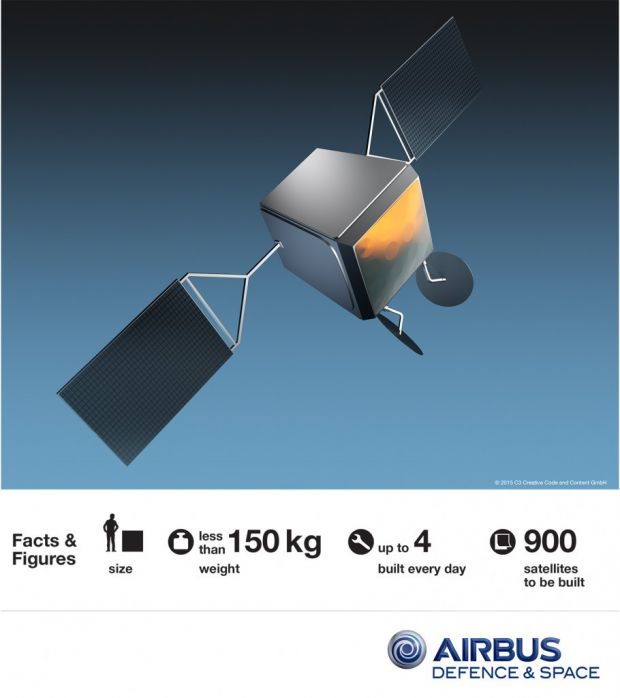If you haven't noticed, there's a fierce competition going on right now for the first company to provide free Internet access to remote areas of the Globe.
Airbus, in a joint project together with OneWeb, Qualcomm, and Virgin Galactic, has taken on the likes of Facebook's Internet.org initiative, a smaller Elon Musk Space X plan, and Google's Loon and Solara projects as part of this race.
A mesh of satellites circling the Earth and delivering free Internet
The Airbus Defense and Space unit will be tasked with producing 900 communication satellites that will be launched into space using Virgin Galactic to provide Internet access to every area of the globe.
The deal was announced at the Paris Airshow, and OneWeb plans to cover the entire surface of the Earth with a mesh of micro-satellites, all by 2018.
Each satellite won't weigh more than 150 kg / 330 pounds and will be around half a human's height.
Over 600-700 satellites are expected to be deployed at first, with the rest remaining on the ground as backups in case of malfunctions or other unexpected issues.
The first ten satellites will be built in Toulouse, France, and if everything tests well, the rest of the fleet will be built at a US-based plant specialized in mass production.
“Combining the innovation and large volume manufacturing techniques from its A350 aircraft production, [...] Team Airbus will help us deliver the OneWeb system on time, providing reliable connectivity for our customers,” said Brian Holz, Head of Space Systems at OneWeb.
Richard Branson is to “blame” for this one as well
According to the BBC, OneWeb secured the project's funds back in January, when it managed to convince Virgin Group founder Richard Branson to put around $2 / €1.77 billion in the project, together with telecommunications equipment manufacturer Qualcomm.
Probably because of this, Virgin Galactic will be tasked with taking the satellites into space via their LauncherOne low-cost orbital launch vehicle.
The entire plan seems a clone of Elon Musk's $10 / €8.91 billion project to put over 4,000 satellites in space for the same reason, all launched with the help of his Space X Falcon 9 rocket. A plan which was also announced back in January of this year. Coincidence or not?



